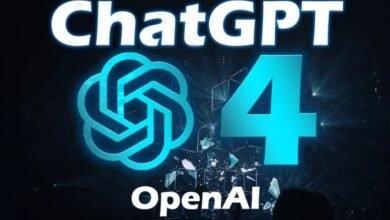How can GPT-4 be fine-tuned for specific industries or use cases?

Fine-tuning GPT-4 for specific industries or use cases has the potential to revolutionize the way organizations approach natural language processing (NLP). By customizing GPT-4 to suit specific requirements, businesses can generate more accurate and contextually relevant outputs. We will explore the steps involved in fine-tuning GPT-4 for specific industries or use cases.
-
Identify the Industry or Use Case
The first step in fine-tuning GPT-4 is to identify the industry or use case that requires customization. For instance, if you want to build an AI-powered customer support chatbot for a specific industry such as e-commerce, you need to identify the relevant domain-specific data that is required for training the model. Similarly, if you want to build a language model for medical records, you need to identify the relevant medical terminologies and jargon that the model needs to be trained on.
-
Gather Data
Once you have identified the industry or use case, the next step is to gather data. The data that is required for training GPT-4 depends on the specific industry or use case. The data can be sourced from various sources such as publicly available datasets, customer feedback, user reviews, social media data, and internal documents. The data should be in a structured format that can be used to train the model.
-
Pre-process Data
The next step is to pre-process the data to ensure that it is in a format that can be used to train the model. This involves cleaning the data, removing any irrelevant information, and converting it into a format that can be used by GPT-4. Pre-processing is a critical step in fine-tuning GPT-4 since the quality of the data used for training can significantly impact the accuracy of the model.
-
Train the Model
The next step is to train the GPT-4 model using the pre-processed data. Training involves feeding the data to the model, and iteratively adjusting the model’s parameters until it generates accurate outputs. Training can be a time-consuming process, and the duration depends on the size and complexity of the data.
-
Evaluate Model Performance
Once the model has been trained, it needs to be evaluated to determine its performance. Evaluation involves testing the model on a set of data that it has not seen before to determine its accuracy and effectiveness. The evaluation results can be used to fine-tune the model further and improve its performance.
-
Fine-tune the Model
Based on the evaluation results, the model can be fine-tuned further to improve its accuracy and effectiveness. This involves adjusting the model’s parameters and retraining it with additional data. The fine-tuning process can be iterative, and the model can be fine-tuned until it generates accurate and relevant outputs.
-
Deploy the Model
Once the model has been fine-tuned, it can be deployed for use. The deployment process involves integrating the model into the organization’s existing systems and applications. The model can be used to generate accurate outputs, such as customer support chatbots, content generators, and language translators.
In conclusion, fine-tuning GPT-4 for specific industries or use cases can significantly improve the accuracy and relevance of NLP outputs. The process involves identifying the industry or use case, gathering and pre-processing data, training the model, evaluating its performance, fine-tuning it, and deploying it. By following these steps, organizations can customize GPT-4 to suit their specific requirements and generate more accurate and contextually relevant outputs.






